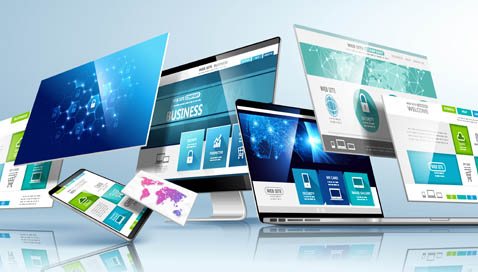CAN YOU PATENT SOFTWARE?
Software has been increasingly permeating through our everyday lives for decades, and the COVID-19 quarantine period only exacerbated the need for new software because so many people were working from home. But software is difficult and expensive to develop, and companies risk the loss of its unique value if protections are not acquired. Patents, and copyrights to some extent, can provide substantial protection for software owners trying to establish their brand in a particular market while recouping their investment. Yet, some people are not aware that patents can be obtained for their software. Outlined below is an overview of software patents, and a discussion of certain exemplary industries that have historically attempted to protect their software with patents.
Software is patentable in the United States. More specifically, in patent speak, software is patent “eligible” and therefore a patent application directed to a software program will not be turned away at the Patent Office door merely because the application relates to software. In fact, by some estimates, over 60% of all patents issued by the Patent Office are software-related patents.


But, while software is patent eligible, it can be peculiar subject matter because the software code itself is not patentable. The patent application must instead explain how the code is implemented to carry out a specific function or operation. The one or more algorithms may be patentable if they result in a technical improvement in the function of the computer itself or if they describe a new and useful computer implemented process. Merely automating a known process using a computer is not enough to earn a patent.
REQUIREMENTS FOR A SOFTWARE PATENT
The requirements for a software patent under 35 U.S.C. §§ 102, 103, & 112 are identical to those for any other subject matter: the claims must be novel, non-obvious, and definite, and the specification must describe the claimed subject matter in such a manner that one of skill in the art would be enabled to practice the invention based on the disclosures in the specification.
Additionally, to be eligible for patenting under 35 U.S.C. § 101, the claims must be directed to a new and useful process, machine, manufacture, or composition of matter. That requirement is easily met, but several exceptions to the eligibility requirement have been developed over the years. For example, claims directed to an “abstract idea,” referring to claim language encompassing mental processes, mathematical equations, and certain methods of organizing human activity, are not eligible for patenting even if they are process, machine, manufacture, or composition of matter.
Since 2014, when the Supreme Court issued its decision in Alice Corp. Pty Ltd. v. CLS Bank Int’l, 134 S.Ct. 2347 (2014), the hot issue with trying to patent software generally relates to whether the claims are directed to an abstract idea. To avoid an abstract idea rejection under 35 U.S.C. § 101, the claims in a patent application must articulate a technical improvement in the function of the computer itself or articulate a new and useful computer implemented process.
A determination as to whether the claims are directed to an abstract idea involves consideration of several factors, including the state of the prior art, the degree of specificity in the claims, and the extent to which the claimed subject matter is integrated into a practical application, to name a few. For example, if a claimed system of implementing software is linked to a particular machine, such as a feed dispenser that dispenses food or supplements according to instructions received from a computer, then the practical application is easy for a patent examiner to identify and an abstract idea rejection should be avoided.


Many times, analogizing the subject matter of an inventor’s software to the software claimed in patents that have been litigated in court provides a basis for why the subject matter at issue is patent eligible or not. An experienced patent attorney will be familiar with the numerous court cases since the Alice case and therefore be in a position to assist an inventor determine if their software may be patent eligible.
WHAT INDUSTRIES FILE PATENT APPLICATIONS?
As noted above, over 60% of all patents issued by the Patent Office are software-related patents. Those patents spawn from a variety of industries that rely heavily on software to deliver their product or service. Below are four of the major industries in this space.
Software as a service (SaaS) has become a common business model in which software is licensed on a subscription basis and hosted centrally, such as via cloud computing. In fact, the SaaS market has been growing large and fast over the past several years, with sales now around $100 billion. Salesforce, PayPal, Adobe, Wix, Dropbox, Shopify, Slack, MailChimp, HubSpot, etc., are examples of some companies that offer SaaS products.
Financial Technology (Fintech) is another booming industry. Fintech companies automate the delivery and use of financial services, including money transfers, check deposits, and raising investment, but the scope is much broader. Subsectors of Fintech include accounting, capital markets, asset management, insurance, financial services, banking, mobile wallets, real estate, payroll and benefits, business lending, and cryptocurrency. The Fintech global market is valued around $300 billion.
Wearable devices, including smart watches and fitness trackers, have become common accessories for many people. Companies like Fitbit, Garmin, Apple, Huawei, Samsung, LG, Sony, Google, Microsoft, and Misfit are some of the bigger companies in this market, which is valued around $40 billion. But many other devices fall into this market too, including medical diagnostic and patient monitoring devices and therapeutic devices. The market for wearable medical devices is expected to grow from its current value of about $20 billion to about $90 billion in the next 5–6 years.
Mobile applications compete in a global market valued over $100 billion. There is a wide diversity of mobile applications, which are generally categorized into one of the following: gaming, entertainment/music, health and fitness, travel and hospitality, retail and e-commerce, education and learning, and other. The market for mobile applications is not expected to slow down anytime soon.


PATENT VERSUS COPYRIGHT PROTECTION
A computer program is a set of instructions in some computer language intended to be executed by a computer to perform a task. Source code is human-readable program statements written by a programmer or developer in a high-level or assembly language that are not directly readable by a computer. Source code needs to be compiled into object code before it can be executed by a computer. The code, generated by a compiler or an assembler, that was translated from the source code of a program. Object code most commonly refers to the machine code that can be directly executed by a computer.
Copyright protection is available for computer programs, such as the source code or object code, and the protection extends to all of the copyrightable expressions embodied in the program.
Registering a copyright with the U.S. Copyright Office can provide protection for software code, but that protection is essentially limited to exactly how the code is written. And copyright protection does not extend to the functionality of the program. Thus, to obtain broader protection and to specifically protect the functionality of the software program, you should seek patent protection.